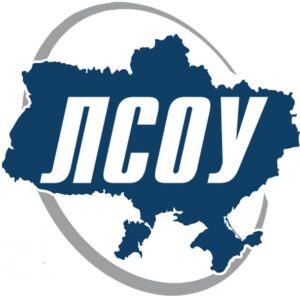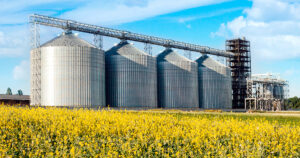
In January-June 2025, Ukraine reduced exports of sunflower oil to 2.407 mln tonnes and revenues to $2.77 bln, down 33.5% and 2.4%, respectively, compared to the same period last year.
According to the statistics released by the State Customs Service, the main buyers of Ukrainian sunflower oil in January-June this year were Spain and Italy, which accounted for 12.88% and 12.18% of exports, respectively, and India with a share of 11.77%. These countries spent $356.945 mln, $337.494 mln and $326.071 mln on the purchase of sunflower oil from Ukraine, respectively.
Exports of rapeseed oil decreased by 3.6 times in this period compared to January-June 2024, to 19.992 mln tonnes, while the revenue was 2.9 times lower and amounted to $58.015 mln.
At the same time, this year Ukraine increased exports of soybean oil by 52% in the first half of the year compared to 287.052 mln tonnes a year ago and doubled the revenue to $295.034 mln.
The main buyers of Ukrainian rapeseed oil were the Netherlands, which accounted for 39.29% of the exported volume, bringing Ukraine $7.750 million, Germany – 21.44% and $4.23 million, Slovakia – 13.13% and $2.591 million, respectively.
Among the most active buyers of Ukrainian soybean oil were Poland – 63.97% of exports worth $188.736 mln, India – 9.02% worth $26.616 mln, and Germany – 4.04% worth $11.925 mln.
In the reporting period, exports of other non-volatile fats and vegetable oils also increased by 1.9 times to 988 thsd tonnes, which is $2.409 mln in monetary terms compared to $2.124 mln a year ago.
At the same time, the import of palm oil to Ukraine in January-June 2025 increased by 2% compared to the first half of 2024 – up to 50.708 thsd tonnes. In monetary terms, the imports amounted to $71.651 mln (+15.2%). Ukraine purchased palm oil from Malaysia – 59.79% of imports of this product, worth $42.839 million, India – 35.7%, worth $25.581 million, and Sweden – 4.17%, worth $2.99 million.
Ukraine’s purchases of olive oil increased by 60.9% to 1.083 million tons, and the cost of purchasing it also increased by 3.5% to $8.277 million. Its main suppliers were Italy (42.55%), Spain (29.62%) and Greece (23.2%). They earned $3.522 million, $2.452 million, and $1.92 million from sales to Ukraine, respectively.

The Institute for Economic Research and Policy Consulting (IER) conducted an online survey of Ukrainians about their experience of crossing the state border when entering Ukraine in the spring of 2025.
The purpose of the study was to find out how much time citizens spend on border procedures, as well as to assess the level of organization of the process of crossing through Ukrainian and foreign checkpoints.
The results(http://tfdialogue.ier.com.ua/archives/7810) show that most respondents crossed the border quite quickly. In particular, 64.7% reported that waiting in front of a Ukrainian checkpoint lasted no more than 30 minutes. It took about the same amount of time to get to the checkpoint.
At foreign checkpoints, there was a wide variation in the experience of crossing the border. Thus, 49% of respondents said they had waited in line for up to 30 minutes, but at the same time, almost one in five respondents (19.6%) had been in line for more than three hours.
The organization of the state border crossing process on the Ukrainian side received higher marks than on the foreign side. The average level of satisfaction with the actions of Ukrainian services was 3.9 points on a five-point scale, with 43% of respondents giving their experience the highest rating.
By comparison, foreign checkpoints received an average score of 3.5 points, with only 21% of respondents giving the maximum 5 points.
This result is largely due to the systematic modernization of customs control procedures and the introduction of modern technological solutions.
In particular, Ukrainian customs officers are increasingly using the latest scanners and other modern control tools. This allows not only to speed up the inspection process, but also to maintain its effectiveness even in the face of existing security challenges.
Please note that due to the seasonal increase in the number of travelers, waiting times at checkpoints in the summer may exceed the figures recorded in the spring of 2025. For our part, we are doing everything possible to ensure that the border crossing process remains fast, convenient and comfortable for citizens – regardless of the circumstances.

The post of Vice-President of the League of Insurance Organizations of Ukraine (LIOU) will now be held by Natalia Gudyma, according to the message of the insurance association.
In the sphere of subordination of Gudyma will include: the development of by-laws in pursuance of the laws “On financial services and financial companies”, “On insurance”, in particular regarding the requirements for solvency and financial reporting, as well as taxation of insurance activities.
“I am impressed by the fact that LSOU has so far been able to establish constructive cooperation with the National Bank of Ukraine. From the point of view of market development, this is super important. I believe that effective development of the insurance market is possible only in close cooperation between the professional community and the regulator”, – emphasizes Gudyma, whose words are quoted in the report.
Gudyma has been in the insurance market of Ukraine for more than 28 years. During this period she has held the following positions: chief accountant of JSC “Insurance Company ‘Blago’; freelance advisor to the Verkhovna Rada Committee on Finance, Customs and Tax Policy; general director of the MTSBU; head of LSOU and NASU; insurance expert of the project ”Strengthening regulation and supervision of the non-banking financial market”; EU-FINREG Hulla & Co. Human Dynamics KG (Human Dynamics)”; Head of Projects and Programs of the NBU Licensing Department; Head of Insurance Market Supervision of the NBU Non-Banking Financial Services Market Supervision Department.

VUSO Insurance Company has changed its approach to health insurance by launching the eDoctor service with a mobile application, artificial intelligence, the ability to get a consultation, order medicines and receive notifications in just a few minutes.
“Nowadays, when every minute is worth its weight in gold, people are increasingly striving to get high-quality medical care simply and quickly, without long queues and unnecessary worries. This is what prompted VUSO to change its approach to health insurance – to make it not only reliable but also as convenient as possible for everyone,” says Oksana Arbuzova, Director of the VUSO Medical Service Organization Department.
According to her, the eDoctor service is built on the principle of self-service. AI takes over some of the routine work previously performed by operators. As a result, the client receives a continuous service: online consultation, registration of results, ordering medicines – all within a few minutes.
At the same time, the service has a hybrid model. A simple request is processed automatically by the bot. If the case is complicated, a medical specialist is involved. The client chooses whether he wants to do it quickly and independently or needs live communication. It’s a balance between technology and care.
According to Arbuzova, the service has already seen clear improvements. First, the number of calls has decreased, which has relieved operators. Secondly, the time from requesting to receiving assistance has been reduced from more than two hours to 3-8 minutes. And thirdly, resources have been optimized: less manual work means more time for complex cases.
“This approach did not go unnoticed: in 2025, VUSO received the Ukrainian CX Excellence (UCXE) award, a prestigious award that annually recognizes the best customer experience cases in Ukraine,” emphasized the department director.
She also said that the company is moving towards creating a digital ecosystem where each request is automatically routed to the right channel. Routine tasks are assigned to bots and robots, and complex ones to operators. More automation, more integrations, and most importantly, even closer contact with customers through their feedback are planned.
VUSO is a Ukrainian insurance company that is one of the four market leaders. The company is a member of the Motor (Transport) Insurance Bureau of Ukraine (MTIBU), the Kyiv Chamber of Commerce and Industry, the National Association of Insurers of Ukraine, and the Nuclear Insurance Pool of Ukraine.

The State Forestry Agency is working on several major projects that will increase transparency of processes and counteract corruption schemes, said Viktor Smal, head of the agency, during a joint briefing with Hamlet Poghosyan, director general of the state-owned LIAZ, at the Media Center Ukraine.
“In just a few years, we have digitized the main permits. Currently, we have an e-felling ticket, an e-certificate of origin, an e-consignment note, which is mandatory for all forest users, and photo recording of all cargoes. And the use of the electronic timber accounting system (ETS) is mandatory for all forest users,” Smal said.
According to him, the digitalization of key processes in the forest industry is ongoing. The team is currently working on several large projects.
“We have started working on a system of global control over the movement of all timber trucks in the country, as well as on the creation of a new generation of EDI. We are creating one of the best timber traceability chains in Europe,” Smal explained.
According to him, the main task in the reform process is to minimize the human factor. In particular, this refers to possible interference with databases by EDI operators. According to him, in 2024, the State Forestry Agency initiated an internal audit for internal security reasons to determine the likelihood of such facts.
“Then all the materials of the inspections were transferred to law enforcement agencies and cyber police were involved to change the security policy of information handling,” Smal assured.
He added that the new management of the State Enterprise “LIAC”, which ensures the operation of the electronic timber circulation system, is working to establish control over all operations related to entering data into the system.
“I would like to emphasize that since the end of 2024, not a single fact of illegal interference has been recorded in the EOD system. This is not a coincidence or a temporary phenomenon, but the result of deep systematic work carried out by the new team of the State Enterprise “LIAC”, – said Hamlet Poghosyan.
According to him, the system has accumulated vulnerabilities over the years that could be exploited by dishonest employees. However, the new team of the State Enterprise “LIAC” eliminated these problems in just a few months of work, in particular, a new procedure for making changes to the EDI and an electronic monitoring system are already in place, and the Internal Security Sector has been created.
“I emphasize once again: we do not tolerate any form of dishonesty. Maximum transparency of individual systems and the industry as a whole is our goal. And step by step we are approaching it,” summarized the head of the State Forestry Agency.

The market of elevator equipment in Ukraine has undergone dramatic changes over the past eight to nine years, with the share of Ukrainian equipment currently at 80% and foreign equipment at 20%, the press service of KMZ Industries reports.
The company noted that in 2016, the share of Ukrainian equipment was only 20%, and foreign equipment – 80%, and as of 2025, the situation is mirrored in key product segments.
“Ukrainian farmers have gradually rethought their approaches to choosing suppliers: they have tried domestically produced equipment and made sure that it is not only on par with imported equipment in terms of quality, but also has a number of additional significant advantages. These include service availability, design for climatic conditions, knowledge of the local context, and the manufacturer’s ability to work in war conditions on an equal footing with the client,” explained Natalia Kulakovska, Marketing Director at KMZ Industries.
She noted that the state program of partial compensation of 25% of the cost of Ukrainian-made equipment played a major role in this market transformation, which allowed farmers to “try their hand at it.” After the first purchase, most of them did not return to imported elevator equipment.
“According to an independent study, in 2024, the share of Ukrainian transport equipment for elevators was 48.8% in monetary terms. If we talk about metal storage silos, the growth is even more significant: in 2024, Ukrainian producers already owned 81.4% of the market. These are not just numbers – it is a proof of trust in domestic production and its ability to meet the modern needs of elevator storage infrastructure for agricultural producers and agro-processors,” Kulakovska summarized.
KMZ Industries is the largest manufacturer of elevator equipment in Ukraine and produces a full range of equipment, including silos, grain dryers, transport equipment and separators, as well as provides automation and installation services.
According to the company, it has built more than 5 thousand facilities. KMZ Industries has silos in operation with a total capacity of over 12.5 million cubic meters.